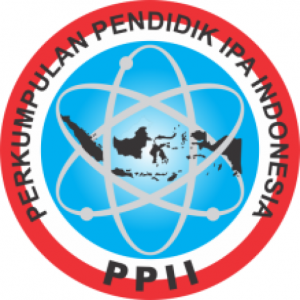Vegetation Analysis and Tree Architecture Model at the Kupang State Agricultural Polytechnic Arboretum
Authors
Badia Roy Ricardo Nababan , Mitha Rabhiyatul Nufus , Darmawana TakoyDOI:
10.29303/jbt.v25i4a.10421Published:
2025-11-04Issue:
Vol. 25 No. 4a (2025): Special IssueKeywords:
Arboretum, Dryland Vegetation, Tree Architecture ModelArticles
Downloads
How to Cite
Downloads
Metrics
Abstract
The Kupang State Agricultural Polytechnic Arboretum is a vegetation collection located in an area with arid and semi-arid climate characteristics. Understanding the vegetation composition and tree architecture model is important information for effective arboretum management and conservation planning in the East Nusa Tenggara region. This study aims to analyze the vegetation composition to determine the Importance Value Index (IVI) at various growth phases and to identify the dominant tree architecture models in the Kupang State Agricultural Polytechnic Arboretum.Vegetation data collection was conducted using the line transect method, covering the seedling to tree phases. The data were analyzed using INP calculations, while tree architecture models were analyzed descriptively and exploratively based on tropical tree architecture references. The results of the vegetation analysis showed that dominant species such as Kirinyuh (Chromolaena adorata), Gewang (Corypha utan), Gamal (Gliricidia sepium), and Jati Putih (Gmelina arborea) had the highest importance values in each growth phase, indicating high adaptability to dry land conditions. The most commonly found tree architecture model was the Troll Model (in 9 of 12 species), characterized by a broad and leafy canopy. The Attims and Rauh models were also found in several species with specific ecological functions. The dominance of adaptive species and the Troll Model indicate that the arboretum functions optimally as shade, windbreak, and erosion control, which are essential for ecological functions in drylands. This study provides important ecological baseline data for conservation management and sustainable green open space development in the semi-arid region of East Nusa Tenggara.
References
Agu Y. P. E. S. (2017). Desain ulang model pengelolaan lahan kering dataran tinggi berbasis agroforestri tradisional di Pulau Timor (Kasus di Kecamatan Miomafo Barat, Kabupaten Timor Tengah Utara, NTT). Tesis. Sekolah Pascasarjana. Universitas Gajah Mada. Yogyakarta.
Endale, Y., Derero, A., Argaw, M., & Muthuri, C. (2016). Farmland tree species diversity and spatial distribution pattern in semi-arid East Shewa, Ethiopia, Forests, Trees and Livelihoods, 26(3), 199-214, DOI: https://doi.org/10.1080/14728028.2016.1266971
Figueiredo, C.C.d., Moreira, T.N., Coser, T.R., Silva, L.P.d., Leite, G.G., Carvalho, A.M.d, Malaquias, J.V., Marchão, R.L., & Urquiaga, S. (2023). Nitrogen use efficiency in an sgrisilviculture system with Gliricidia sepium in the Cerrado Region. Plants, 12, 1647. DOI: https://doi.org/10.3390/plants12081647
Hallé, F., Oldeman, R. A., & Tomlinson, P. B. (2012). Tropical trees and forests: An architectural analysis. Springer.
Hamdani, M.F., Ahmad, B., & Peran, S. T. (2022). Model arsitektur pohon di arboretum Fakultas Kehutanan Universitas Lambung Angkurat. Jurnal Sylva Scienteae, 5(3), 480-492. DOI: https://doi.org/10.20527/jss.v5i3.5723
Hadinoto & Suhesti, E. (2018). Model Arsitektur Pohon Arboretum Universitas Lancang Kuning Sebagai Penunjang Pembelajaran. Wahana Forestra: Jurnal Kehutanan Vol. 13, No. 1 DOI: https://doi.org/10.31849/forestra.v13i1.1527
Hendarso, S. A., Sulistiono, I. Rahmawati, Imas Cintamulya. (2022) Arsitektur Percabangan Pohon di Taman Kota Kediri. Jurnal Biologi dan Pembelajarannya, 9(2): (113‑122). DOI: https://doi.org/10.29407/jbp.v9i2.18857
Hendra, M., Jusmaldi, Rukmi D. S., & Subagiada, M. K. (2025). Struktur, komposisi, dan model arsitektur pohon di kawasan rehabilitasi Sungai Karang Mumus Lempake, Samarinda. Berita Biologi 24(1): 73 – 84. DOI: https://doi.org/10.55981/berita_biologi.2025.9469
Indriyanti, S. Y., Sardjono, M. A., & Saragih, B. (2021). Potensi penarik dari periduta arboretum sampaja sebagai media pendidikan lingkungan. Jurnal pengabdian masyarakat bangsa. 1(1),1-12. DOI: https://doi.org/10.20886/jped.2021.7.2.101-112
Jian, Z., Bo, L., & Mingyue, W. (2018). Study on windbreak performance of tree canopy by numerical simulation method. The Journal of Computational Multiphase Flows Vol. 10(4): 259–265. DOI: https://journals.sagepub.com/doi/pdf/10.1177/1757482X18791901
Kamaluddin, Atini. B., & Hano’e. E. M. Y. (2024). Model Arsitektur Pohon di Sekitar Daerah Aliran Sungai (DAS) Kecamatan Insana Tengah. Jurnal Pro-Life, Volume 11 Nomor 1: 56-65. DOI: https://doi.org/10.33541/pro-life.v11i1.5332.
Kusuma, Y. W. C., & Witono, J. R. (2020). Population structure, dispersion pattern and seedling growth of gewang palm (Corypha utan lam.) in Timor Island, Indonesia. Biotropia, 27 (1), 33-40. DOI: https://doi.org/10.11598/btb.2020.27.1.999
Aguirre, A. M. L., & Trilleras, A. B. (2024) Variability of water use efficiency of Gmelina arborea plantations in the tropical dry forest of Colombia. Forests,15 (7), 1192. DOI: https://doi.org/10.3390/f15071192.
Makin. F. M. P., Welsiliana, & Wiguna, G.A. (2022). Karakterisasi stomata dan trikomata daun kirinyuh (Chromolaena odorata L.) Vol 3 no 1. Jurnal science of biodiversity sci-bio. DOI: https://doi.org/10.32938/jsb/vol3i1pp61-67.
Naharuddin. (2021). Erosion Levels at Tree Architecture Model Plots of Attims (Eucalyptus deglupta), Corner (Arenga pinnata), and Rauh (Arthocarpus teysmanii). Jurnal Ilmu Kehutanan, 15(1), 28-41. DOI: https://doi.org/10.22146/jik.v15i1.1510
Naiola. B. P. (2006). Fluktuasi potensial air harian gewang (corypha gebanga lamk.), jenis tumbuhan hijau abadi di savana NTT Berita Biologi, 8(1), 75-82. URL: http://download.garuda.kemdikbud.go.id/article.php?article=764151&val=9633&title=FLUKTUASI%20POTENSIAL%20AIR%20HARIAN%20GEWANG%20Corypha%20gebanga%20Lamk%20JENIS%20TUMBUHAN%20HIJAU%20ABADI%20DISAVANA%20NTT
Osonubi, O., Fasehun, F. E., & Fasidi. I. O. (1985). The influence of soil drought and partial waterlogging on water relations of Gmelina arborea seedlings. Oecologia, 66(1), 126‑131. DOI: https://doi.org/10.1007/BF00378564
Prasetio, R. N., Peran, S. B., & Bakri, S. (2021). Analisis kesesuaian fungsi pohon dan model arsitekturnya di Rumah Sakit Idaman Banjarbaru. Jurnal Sylva Scienteae. 4(1), 138-151. DOI: https://doi.org/10.20527/jss.v4i1.3102
Simanjuntak, R. H., Manurung T. F., & Anwari M. S. (2022). Model arsitektur pohon pada ruang terbuka hijau (RTH) Kota Pontianak. Jurnal Lingkungan Hutan Tropis, 1 (2). 512-521. DOI: https://jurnal.untan.ac.id/index.php/jlht/article/view/61485/75676596230
Soerianegara, I., & Indrawan, A. (1988). Ekologi hutan Indonesia. Departemen Manajemen Hutan, Fakultas Kehutanan, Institut Pertanian Bogor.
Soimin. M. (2023). Arsitektur pohon pada area ruang terbuka hijau Kota Kupang Provinsi Nusa Tenggara Timur. Jurnal Wana Lestari, 05(2): 309-318. DOI: https://doi.org/10.35508/wanalestari.v5i02.13708
Suraida. (2012). Identifikasi Tumbuhan Penghijauan Sebagai Media Belajar Biologi. Jurnal Edu-Bio. Vol 3: 55-64. DOI: https://adoc.pub/identifikasi-tumbuhan-penghijauan-sebagai-media-belajar-biol.html
Syafie, A. (2009). Model Arsitektur Pohon dan Fungsinya dalam Struktur Hutan Tropis. Jurnal Penelitian Hutan dan Konservasi Alam, 6(1), 69–75.
Valverde-Otárola, J. C., & Arias, D. (2020). Efectos del estrés hídrico en crecimiento y desarrollo fisiológico de Gliricidia sepium (Jacq.) Kunth ex Walp. Colombia Forestal, 23(1), 20-34. https://doi.org/10.14483/2256201X.14786
Faße, A., Winter, E., & Grote, U. (2014). Bioenergy and rural development: The role of agroforestry in a Tanzanian village economy. Ecological Economics, 106, 155–166. DOI: https://doi.org/10.1016/j.ecolecon.2014.07.018.
Oktebriyani, P. N., Dewantara, I., & Erianto. (2019). Evaluasi arboretum Sylva Indonesia PC Untan dan pendopo gubernur kalimantan barat menjadi hutan kota di Pontianak Kota. Jurnal hutan lestari. 7(2): 807 – 821. DOI: https://doi.org/10.26418/jhl.v7i2.34074
Otálora, G., Carmen, M., López-marín, J., Varó, P., & Francisco, M. (2018). Scientia horticulturae effects of foliar nitrogen fertilization on the phenolic, mineral, and amino acid composition of escarole (Cichorium endivia L. var. latifolium). Scientia Horticulturae, 239, 87-92. DOI: https://doi.org/10.1016/j.scienta.2018.05.031.
License
Copyright (c) 2025 Badia Roy Ricardo Nababan, Mitha Rabhiyatul Nufus, Darmawana Takoy

This work is licensed under a Creative Commons Attribution 4.0 International License.

Jurnal Biologi Tropis is licensed under a Creative Commons Attribution 4.0 International License.
The copyright of the received article shall be assigned to the author as the owner of the paper. The intended copyright includes the right to publish the article in various forms (including reprints). The journal maintains the publishing rights to the published articles.
Authors are permitted to disseminate published articles by sharing the link/DOI of the article at the journal. Authors are allowed to use their articles for any legal purposes deemed necessary without written permission from the journal with an acknowledgment of initial publication to this journal.


























